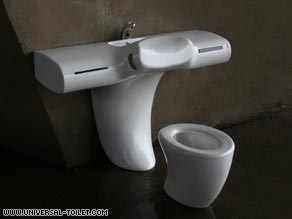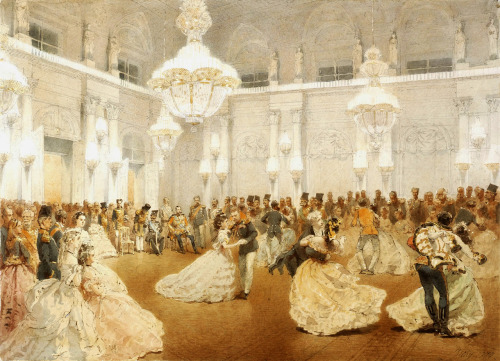“Public spaces facilitate the exchange of ideas, friendships, goods and skills.”
- (Dines and Cattell et al, cited by worpole and knox, 2006)
During my research i stumbled across a report, published by the Joseph Rowntree Foundation, called, 'The Social Value of Public Spaces'. The idea of a social function and benefit within public spaces was something that I've realised i always took for granted and not something i had previously properly thought about or studied. The report stated that public spaces played a vital role in the social and economic life of communities and that new kinds of public spaces were now being created in towns and cities, which could become important social resources. The report was a summary of research projects undertaken in England and Wales, in which, Ken Worpole and Katherine Knox explored just how people used public space, how these places functioned, and their social value.
The report states its key findings were;
■ Public spaces (including high streets, street markets, shopping precincts,community centres, parks, playgrounds, and neighbourhood spaces in residential areas) play a vital role in the social life of communities. They act as a ‘self-organising public service’, a shared resource in which experiences and value are created (Mean and Tims, cited by Worpole and Knox, 2010).
■ Public spaces offer many benefits: the ‘feel-good’ buzz from being part of a busy street scene; the therapeutic benefits of quiet time spent on a park bench; places where people can display their culture and identities and learn awareness of diversity and difference; opportunities for children and young people to meet, play or simply ‘hang out’. All have important benefits and help to create local attachments, which are at the heart of a sense of community (Worpole and Knox, 2010).
■ The success of a particular public space is not solely in the hands of the architect, urban designer or town planner; it relies also on people adopting, using and managing the space – people make places, more than places make people (Worpole and Knox, 2010).
■ The use of public spaces varies according to the time of day and day of the week, and is affected by what is on offer in a particular place at a particular time. In one town centre studied there was a clear rhythm to the day, with older people shopping in the central market early on, children and young people out at the end of the school day, and young adults dominating the town centre at night. (Worpole and Knox, 2010).
■ Some groups may be self-segregating in their use of different public spaces at different times, with social norms affecting how and whether people engage with others. Public spaces are a particular and distinct resource for young people looking to socialise with others. However, groups of young people are sometimes perceived as having antisocial intentions, which in many cases is simply not true (Worpole and Knox, 2010).
■ Retailing and commercial leisure activities dominate town centres, and though public space can act as a ‘social glue’ the research found that in some places ‘the society that is being held together is a stratified one, in which some groups are routinely privileged over others’ (Holland et al, 2006). So, for instance, young and older people are discouraged from frequenting shopping areas by lack of seating or (for groups of younger people) by being ‘moved on’ (Worpole and Knox, 2010).
■ The research challenges several current government policy assumptions concerning public space. The ‘urban renaissance’ agenda appears too concerned with matters of urban design, as well as being distinctly metropolitan in character. The majority of public spaces that people use are local spaces they visit regularly, often quite banal in design, or untidy in their activities or functions (such as street markets and car boot sales), but which nevertheless retain important social functions (Worpole and Knox, 2010).
■ The research questions whether the government’s emphasis on crime and safety in public spaces is depriving them of their historic role as a place where differences of lifestyles and behaviour are tolerated and co-exist. What is considered ‘antisocialbehaviour’ may vary from street to street, from one public situation to the next, or from one person to the next (Worpole and Knox, 2010).
■ It is also important for policy-makers and practitioners to recognise that so-called marginal or problem groups, such as young people, or street sex workers, are also a part of the community. Definitions of ‘community’ that exclude particular groups are of questionable legitimacy in the long term (Worpole and Knox, 2010).
■ Regeneration strategies or policing approaches intended to ‘design out crime’ can end up ‘designing out’ people. Approaches that strip public spaces of all features vulnerable to vandalism or misuse actively discourage local distinctiveness and public amenity (Worpole and Knox, 2010).
With my current gallery design project in mind i was quite keen to find out what makes social spaces successful and whether the integration of the spatial features and behaviours would be benefitial or relevant to my design. I found a piece within the report that answered the question...
"What are the main features of successful social spaces?
The study of a wide variety of public spaces in Cardiff, Preston and Swindon (Mean and Tims 2005, cited by Worpole and Knox, 2010), suggested the following ‘rules of engagement’ were important in creating shared social spaces:
- Access and availability - good physical access, welcoming spaces and extended opening times.
- Invitations by peers and others - embeded in social networks to encourage use
- Exchange - based relationships - moving beyond consumerism to participation in the exchange of goods and services.
- Choreography of spaces by discreet good management while also leaving room for self organisation
- Moving beyond mono-cultures - encouraging diverse groups and activities to share common spaces
- The study of markets (Watson with Studdert 2006) found that in addition to accessibility, the essential attributes of successful markets (criteria which could also apply to other public spaces) included:
- Having features that attracted visitors to the site
- An active and engaged community of traders to provide goods for sale and contribute to the social scene
- Opportunities to linger through the provision of cafes and food vans or ‘comfort zones."
Source;
Ken Worpole and Katharine Knox. (2010). The social value of public spaces. Available: http://www.jrf.org.uk/sites/files/jrf/2050-public-space-community.pdf. Last accessed 16/12/2014.
The Report cited other research projects commissioned under the Joseph Rowntree Foundation’s Public Spaces Programme, as well as other relevant research;
Melissa Mean and Charlie Tims (September 2005) People
make places: Growing the public life of cities. Published
by Demos. Report available from www.demos.co.uk.
Nicholas Dines and Vicky Cattell with Wil Gesler and
Sarah Curtis (Queen Mary, University of London)
(September 2006) Public spaces, social relations and wellbeing
in East London. Published by The Policy Press for
the Joseph Rowntree Foundation. Report and summary
available from www.jrf.org.uk.
Sophie Watson with David Studdert (Open University)
(September 2006) Markets as spaces for social interaction:
Spaces of diversity. Published by The Policy Press for
the Joseph Rowntree Foundation. Report and summary
available from www.jrf.org.uk.
Jane Pitcher, Rosie Campbell, Phil Hubbard, Maggie
O’Neill and Jane Scoular (Staffordshire, Loughborough
and Strathclyde Universities) (May 2006) Living and
working in areas of street sex work: From conflict to
coexistence. Published by The Policy Press for the
Joseph Rowntree Foundation. Report and summary
available from www.jrf.org.uk.
Caroline Holland, Andrew Clark, Jeanne Katz and Sheila
Peace (Open University) (April 2007) Social Interactions in
Urban Public Places. Published by The Policy Press for
the Joseph Rowntree Foundation. Report and summary
available from www.jrf.org.uk.
Peter Jones, Marian Roberts and Linda Morris, with
Pushpa Arabindoo, Budhi Mulyawan and Alex Upton
(University of Westminster) (April 2007) Mixed use streets:
Enhancing liveability and reconciling conflicting pressures.
Published by The Policy Press for the Joseph Rowntree
Foundation. Report and summary available from www.jrf.
org.uk.



















.jpg)























